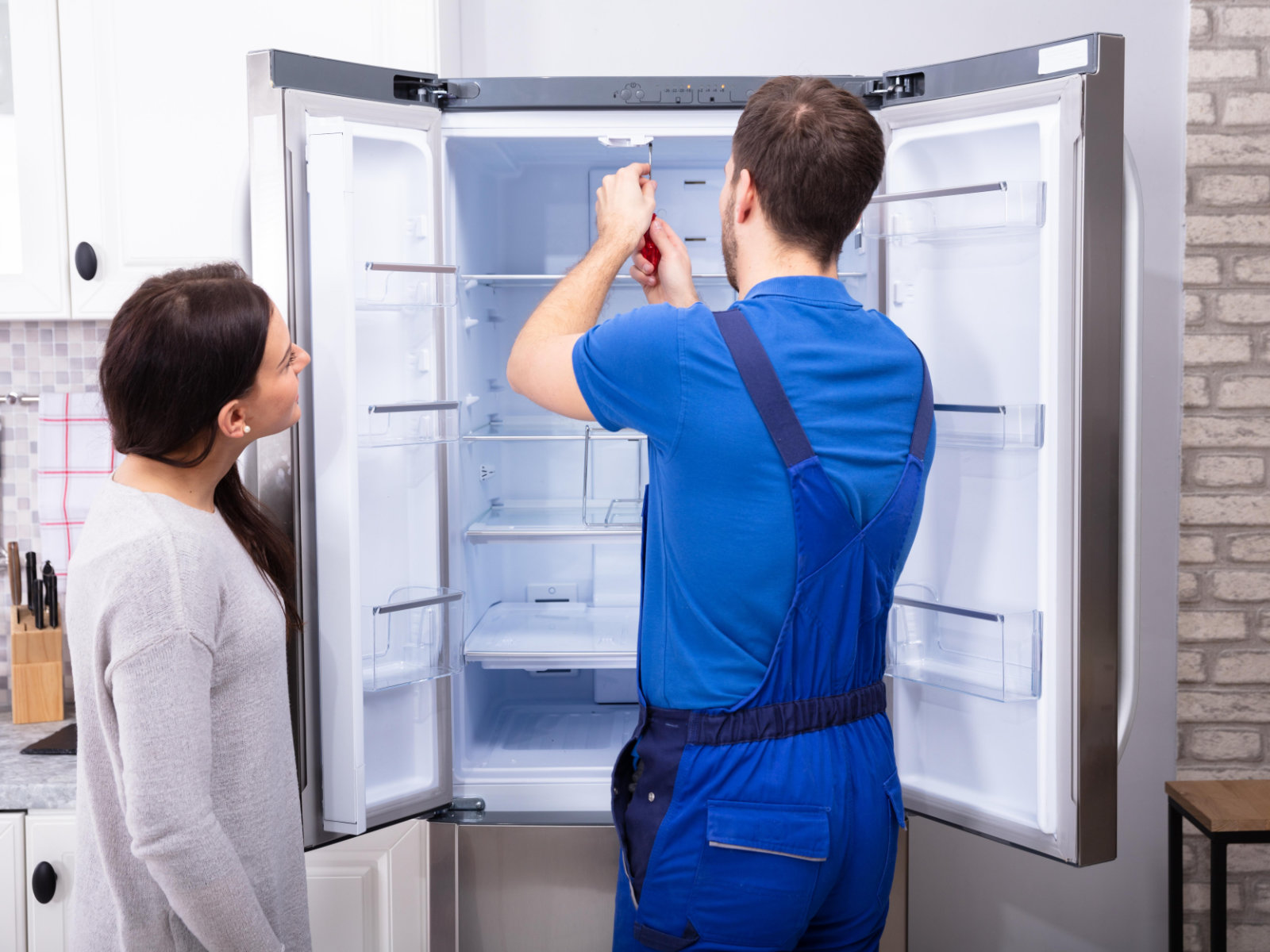Call us: (336) 666-0948
A warm refrigerator can feel like an emergency—but a few quick checks may solve the problem or at least narrow it down before the technician arrives. Grab a flashlight, a flat-head screwdriver, and these five do-it-yourself tests recommended by New Life Appliance Repair for North & South Carolina homeowners.
1. Check the Temperature Settings
- Open the fresh-food section.
- Make sure the thermostat dial or digital control hasn’t been bumped to “OFF” or a warmer setting.
- Ideal targets: 37 °F (3 °C) for the fridge and 0 °F (−18 °C) for the freezer.
Quick fix: If the panel is unresponsive, flip the kitchen breaker off for 30 seconds, then back on to reboot the control board.
2. Inspect Door Gaskets for Leaks
- Close a dollar bill in the door so half sticks out.
- Tug gently. If it slides out without resistance, the seal is weak.
- Repeat at several spots, especially the corners.
DIY remedy: Clean the gasket with warm soapy water and a soft cloth; residue and crumbs often break the seal.
3. Listen for the Evaporator Fan
Stand with the door open and press the door switch (so lights turn off).
- A quiet whirring should start within 10 seconds.
- No sound? The evaporator fan may be iced over or failed.
Tip: Frost buildup on the back interior wall is a red flag—manually defrost by unplugging the fridge for 12 hours to restore airflow, then call us if the noise doesn’t return.
4. Feel the Airflow at Vents
- Hold your hand in front of the top fridge vent (usually on the back wall).
- Weak or no airflow means a blocked vent, failed damper, or fan issue.
- Shift food containers an inch away; over-packed shelves often restrict circulation.
5. Clean the Condenser Coils
Tools: Coil brush or vacuum with a soft-bristle attachment.
- Unplug the refrigerator.
- Pull it forward carefully (have a helper steady the water line).
- Brush or vacuum dust from the black coils underneath or behind the unit.
- Restore power and listen—compressor run-time should shorten within an hour.
Energy bonus: Clean coils can trim up to 10 % off yearly fridge electricity costs.
When to Call the Pros
- Compressor runs constantly after these checks.
- Interior temp remains above 45 °F (7 °C) after 4 hours.
- You see oil spots under the fridge (possible sealed-system leak).
Save your notes—temperatures, noises, and test results—then book service with New Life Appliance Repair. Sharing what you learned speeds up diagnostics and helps us bring the right parts the first time.
Need help fast? Our certified technicians cover both North and South Carolina with same-day appointments. Call now, and we’ll keep your cool intact!
